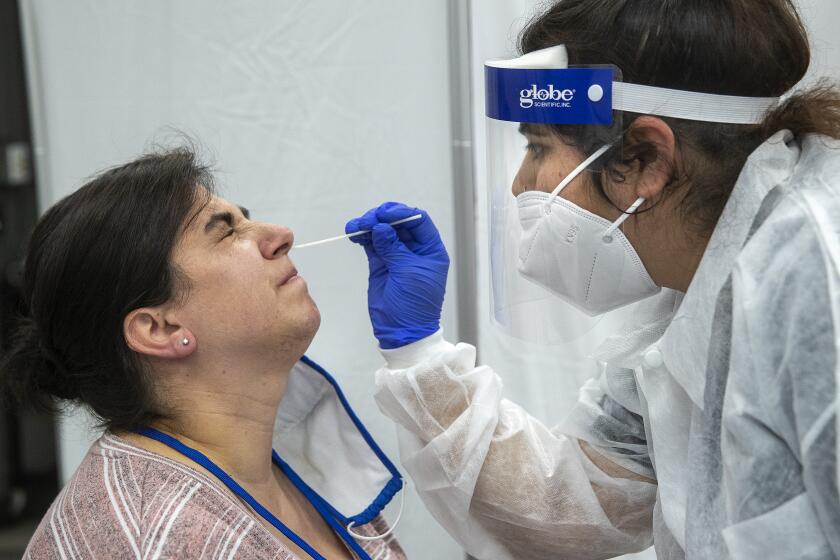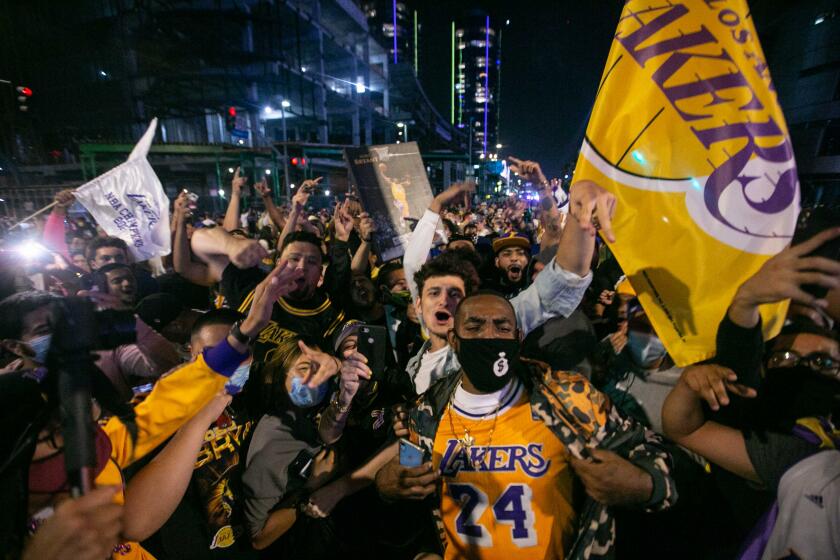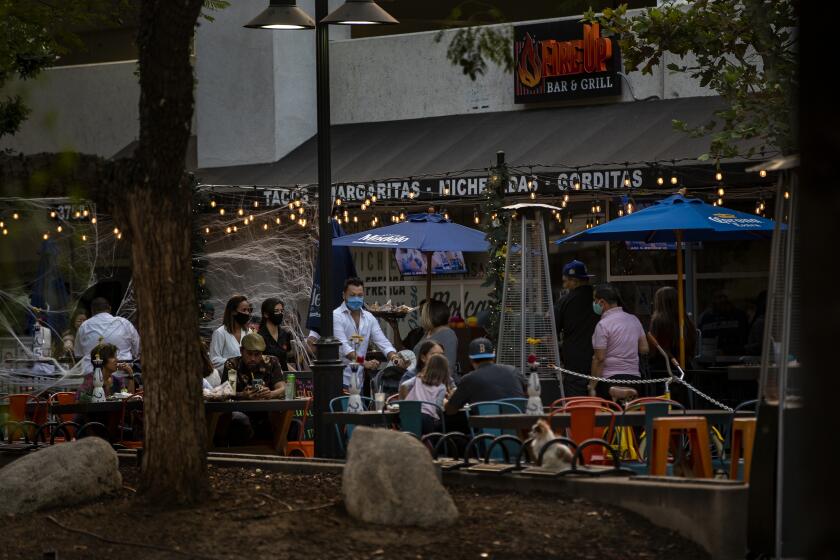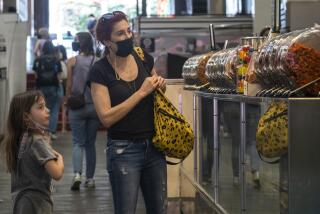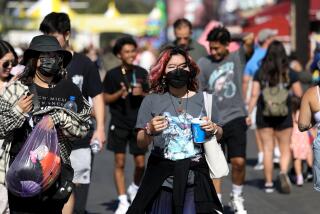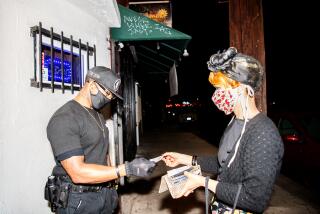L.A. County to ease some coronavirus rules, though a wide reopening remains elusive
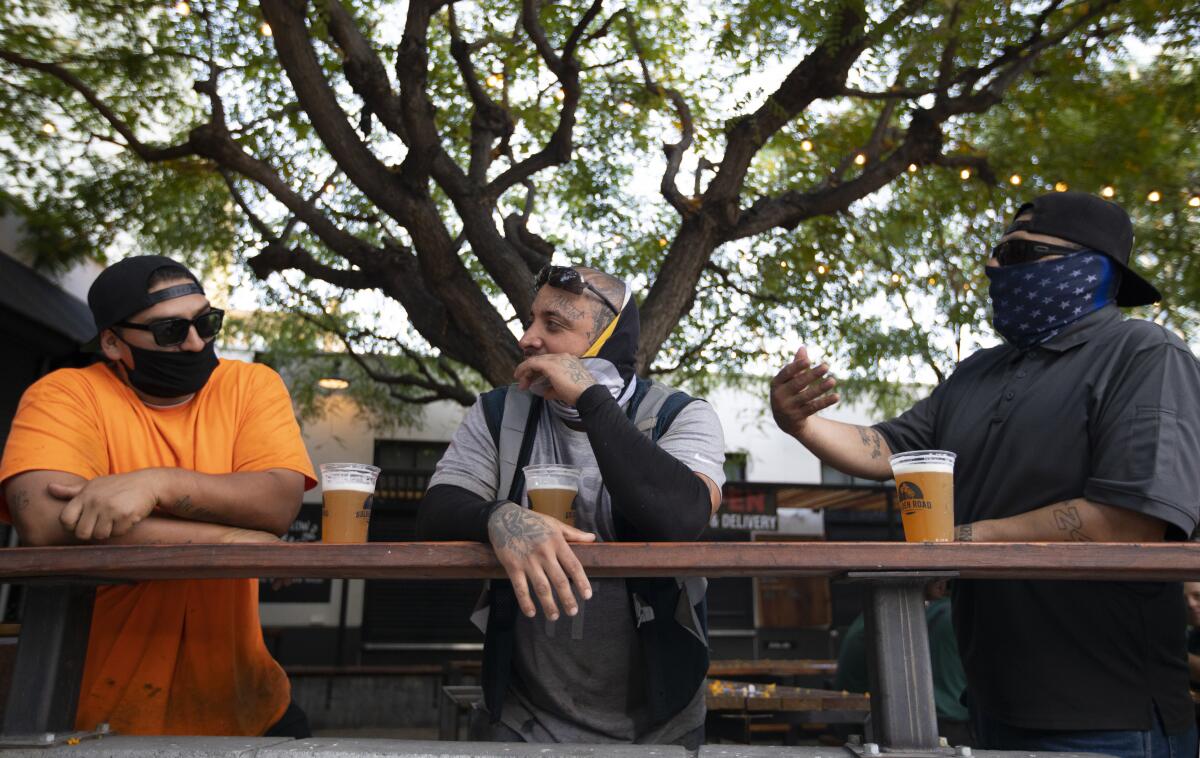
Although Los Angeles County remains rooted in the most restrictive tier of California’s coronavirus reopening road map, officials this week announced plans to relax some requirements on businesses to bring the county’s standards in line with wider state guidelines.
The changes — expected this week — will allow family entertainment centers to open outdoors; eliminate a requirement that customers at wineries and breweries make reservations; and remove the food requirement for wineries.
“I hope this provides much-needed relief and respite for residents who are looking for some activities outside of their homes,” Kathryn Barger, chairwoman of the L.A. County Board of Supervisors, said during a briefing Wednesday.
“These updates will also bring more employees back to work,” she said — a pivotal development in a region where the unemployment rate has been estimated at 16%.
The Board of Supervisors voted 3 to 2 to approve a motion allowing additional sectors of the economy to reopen after months of closures amid the COVID-19 pandemic.
Barger also said county schools are in line to welcome back more students for in-person instruction.
According to the supervisor, schools have been allowed to bring up to 10% of students back on campus at a time if the students have special needs, such as those with disabilities or who are learning English.
“We will now increase to 25% capacity for high-needs students so more children and youth can have access to their teachers and the on-site support systems that are so critical for their growth and for their education,” Barger said.
It is unclear when that change will go into effect. But as L.A. County remains in Tier 1 of the state’s four-tier reopening plan — also called the purple tier, which indicates widespread risk of community coronavirus transmission — campuses cannot reopen for all students.
The confusing patchwork of school reopenings in L.A. County has created confusion for students and parents. Here’s some information on how all of this works.
The county’s spot in the state’s most stringent tier also prevents wider economic reopenings. Under the purple category, many businesses and public facilities either cannot operate indoors or can do so only at a strictly limited capacity.
Counties land in the purple tier if they have more than seven new coronavirus cases per 100,000 people per day or a test positivity rate of more than 8%.
As of Wednesday, L.A. County’s case rate remained above the threshold required to move down into the red tier.
“I think many of us are discouraged that we haven’t yet reduced our case rate enough to move to Tier 2,” L.A. County Public Health Director Barbara Ferrer said Wednesday. “I do want to note that we do have the tools in hand to drive transmission rates down in our communities. Not only do we want to eventually progress into less restrictive tiers, but we want to be able to continue to keep businesses and institutions open.”
Ferrer announced 33 new COVID-19 deaths in the county, raising the total toll to 6,944, as well as 510 new cases for a total of 290,486.
But she cautioned that “some significant technical issues with data reporting systems” have led to delays in case reporting, so the latest daily case figure is likely an undercount.
Officials stressed that the disease can strike any age group and that personal decisions on adhering to prevention measures will dictate when the county can further lift restrictions on businesses and public facilities.
Ferrer said the county has made significant progress in driving down its daily numbers of new cases, hospitalizations and deaths since those metrics peaked during a statewide surge over the summer.
That progress is fragile, though, and could easily evaporate. Since mid-September, Ferrer said, the county has seen a slight uptick in its daily number of reported cases, “and this is a cause for some worry.”
“As we head into a season with many holidays, and as we all celebrate the victories of our amazing sports teams, we can be very tempted to relax our diligence,” she said. “But unfortunately, if we do, it will only result in more cases. And that makes it difficult for us to move forward in our recovery, and it also leads to unnecessary illness and even death.”
For evidence of that, she said, residents need look no further than elsewhere in the United States, where some areas are contending with significant surges in coronavirus cases.
Experts warn of pandemic fatigue and complacency with the approaching holidays, which have the potential to be super-spreading events.
“You just have to look around the country to note how hard we all have to work to just not get ourselves into a lot of trouble,” Ferrer said. “Because the more things are opened up, the more we interact with each other, and that means the more protections we have to take with every single one of those interactions.”
Health officials continue to emphasize the importance of an oft-recited list of precautions people should take to help stymie the spread of the coronavirus: regular hand-washing, wearing face coverings in public, maintaining physical distance from those you don’t live with, and staying home when you’re sick.
Ferrer acknowledged that “it is hard to be months into a pandemic that we all hoped would be over by now” and still be reciting the same mantra.
But she said: “In order to continue to make progress, we have to double down and use the tools that we have.”
More to Read
Sign up for Essential California
The most important California stories and recommendations in your inbox every morning.
You may occasionally receive promotional content from the Los Angeles Times.

